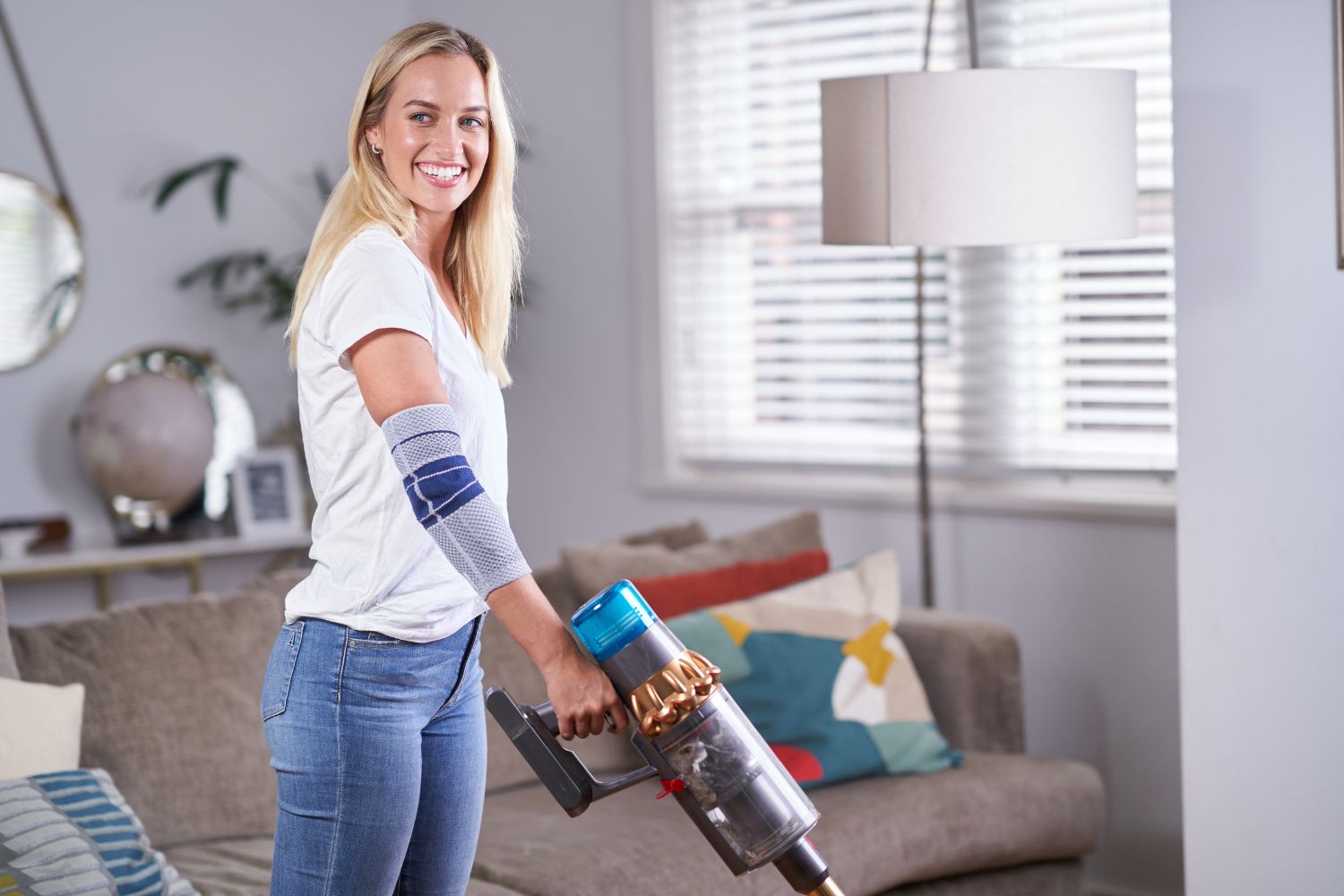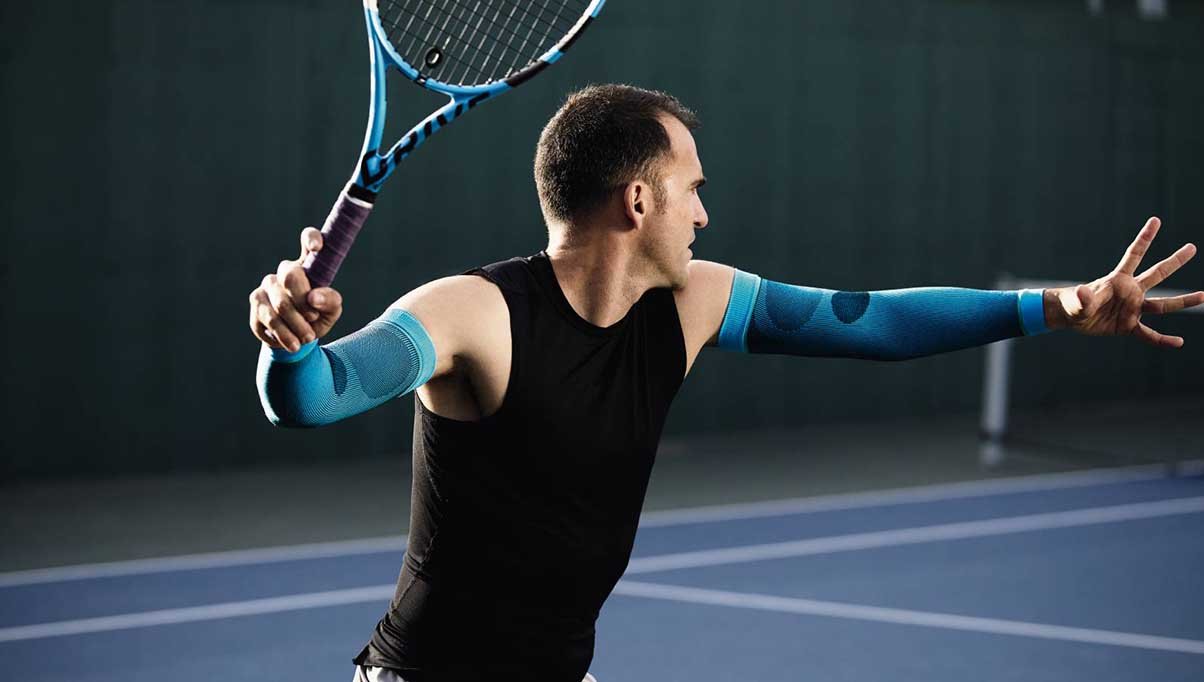House cleaning is a constant (and essential) part of life. But, unfortunately, the repetitive and physically demanding activity can take a toll on your knees, back, and even elbows - and the effects aren’t limited to those pre-existing conditions or joint injuries. So, to keep your joints happy and healthy, here’s our guide to pain-free cleaning.
Warm-up
As with gardening, house cleaning can be a workout. While you likely won’t need a full warm-up before wiping down a kitchen table or folding a load of laundry, it is a good idea to take a few minutes and get the blood-pumping if you have an hour or more of cleaning tasks lined up.
Go for a walk around the block, do a few stretches, squat a few times, and you’ll be ready to clean.
Pace yourself
Cleaning the house involves a lot of wiping, spraying, kneeling, bending, and lifting. When done in moderation, they’re unlikely to cause issues. But if you let them stack up, don’t be surprised when your joints start complaining. So, clean smart, not hard. While you will need to do some cleaning tasks daily, others can wait. And while you should definitely adjust depending on where you live and how busy your household is, here's a general guide on what and when you should clean to avoid overwhelming your joints and back.
Daily:
Clean high-touch, high-use, hygiene-concern areas like the kitchen sink and counters, dining table, bathroom faucets, toilet seat, and flush button.
Semi-weekly:
Vacuum high-traffic areas and dust mop hard floors.
Weekly:
Vacuum all carpeting, mop hard floors, clean other bathroom surfaces (counters, sinks, shower cabins), wipe down kitchen appliances (and if one is looking particularly grimy, clean the insides as well), wipe down mirrors and windows, dust furniture.
We know it can be tempting to marathon-clean your house before guests arrive, but that’s often a recipe for knee and back pain (especially if you’re recovering from injury or have arthritis). As long as things are kept orderly, you likely won’t need to do much cleaning (no matter what your paranoia tells you!).
Don’t let things pile up
Continuing with the recommendation of clean smart, not hard:
- Fresh spills are much easier to get rid of than old stains. Wipe away the mess sooner rather than scrubbing hard at it later.
- Letting clutter build up ultimately results in more work.
- Lighter loads of laundry are a lot easier on your knees and back.
Equipment
Good, joint-protecting cleaning equipment can save you a lot of pain.
- Rubber gardening or cleaning gloves often have a textured surface on the palms and fingers, making it easier to grip things and reduce a bit of strain on the fine muscles running from your elbow to your wrist.
- Dusters and dustpans with longer handles reduce the need to reach and bend, saving your upper and lower back some painful work.
- Smaller bottles are much easier to lug around than large ones.
- A kneeler pad can be a lifesaver for bathtub scrubbing and floor wiping.
- A hand-held vacuum will be much easier (and safer) to haul up the stairs than a regular body-and-hose one.
Brace yourself with joint protection

EpiTrain Elbow Brace
Braces are a great way to add some extra support to your cleaning routine. The compression fabric in knit braces boosts circulation through the joint and stimulates the muscle. Hence, the muscle works more efficiently and effectively to protect other joint structures (disks, tendons, ligaments, etc).
The EpiTrain Elbow Brace, for example, is great for cleaning days involving a lot of wiping. This elbow brace is a good fit for cleaning as it protects your epicondyle tendons from overuse.
The LumboTrain Back Brace, meanwhile, can help you improve your lifting posture and protect your lumbar during bends.
And the GenuTrain Knee Brace can support you through a long day of cleaning on your feet, helping you avoid overuse and general knee pain.
Use good lifting practices
Whether you’re lifting a laundry basket or hefting up a vacuum cleaner to take upstairs, make sure you lift correctly. Even if something seems light, your lumbar might disagree.
- Squat down by bending the knees, flexing the hips, and pushing your buttocks backwards. You want to keep your spine nice and neutral throughout the lift.
- You want to keep the object as close as possible to your torso throughout the lift. Don’t stretch your arms in front of you when lifting it to avoid straining your back and shoulders.
- When you’re setting it down, do so exactly as you lifted it, but in reverse.
- DO NOT twist any part of your back as you lift.
- Moving a bit slower is often better. Dropping into a squat (especially when holding something heavy) can damage your knees.
Ask for help when you need it
Some cleaning tasks are a two-person job. Don’t try to move heavy furniture yourself. Even with good lifting form, the weight can still herniate a disk or pull a muscle. If you have to use a ladder, it's best to have someone stabilising it to avoid acute injuries from a fall. And last but not least (and linking back to our first point), cleaning is always easier when someone helps with some of the load.
To sum up
No one can escape house cleaning, but you can escape cleaning pains. Cleaning smart, practising good ergonomics, getting the right equipment, bracing your joints, and asking for help are all essential to pain-free cleaning.
If you require assistance selecting the right product for your needs or wearing the brace, call us on 098015660 or contact us via live chat.
Do you have private health? Most private health extras will cover Bauerfeind Products. Check to see if yours is included. Bauerfeind Private Health Insurance Inquiry.
















